Looking to enjoy some of Japan’s most delicious foods? Many travelers know Japan as one of the world’s best culinary destinations. All across Japan, food and drinks are at the center of culture, bringing people together to enjoy the preparation and pairing of flavors in each dish, whether it be street food or traditional restaurant dining. So, let’s take a tour of three Japanese cities known for their delicious food and drinks!
Tokyo: Where Tradition and Innovation Mix
The first stop is, of course, the nation’s capital, Tokyo. In Tokyo, ramen isn’t just food, it’s an art form that warms the soul! The best thing about Tokyo is that if there isn’t enough time in the travel itinerary to visit several cities, it is still possible to find must-try foods from many major towns solely in Tokyo. As a food capital, Tokyo takes pride in foods such as sushi, ramen, and tempura.

Sushi: Head to Tsukiji Outer Market for the freshest sushi around. This area is known itself Japan’s “Food Town” because finding numerous traditional Japanese foods is effortless here. Restaurants line the streets offering everything from sushi, meat, and vegetables to tea rooms and coffee shops. Tsukiji used to be the main hub in Tokyo where professionals go to buy fresh fish for their restaurants; it can get hectic in the mornings. You can now find chefs buying their fish early in the morning in Toyosu. If relaxing and enjoying a taste of the market-fresh ingredients are preferable, there are roughly 22 sushi restaurants that open for lunchtime around 11:00~15:00, and reopen for dinner from 17:00~22:00.

Ramen: The ever-popular cities of Shibuya and Shinjuku are recognized for their variety of ramen restaurants, each with a different flavor of ramen to offer. Tonkotsu ramen broth (also known as Hakata ramen, originating from Fukuoka Prefecture) is made by simmering pork bones and fat on high heat until the broth looks milky. Added to the rich broth are thin, straight noodles cooked al dente, and usually topped with garlic, spring onions, ginger, and chashu (sliced pork belly).
Shoyu (soy sauce) ramen has a clear, salty taste, with medium-thin curly noodles and toppings and ingredients similar to those of tonkotsu ramen— vegetables, seaweed, egg, and chicken (or seafood). Shoyu ramen is popular because many toppings go well with the salty flavor. The salty taste in ramen comes primarily from the broth, which is often seasoned with salt and other salty ingredients like shoyu to enhance the flavor. It is a key ingredient that amplifies the umami notes of the broth; without it, the broth can taste flat.
Miso (fermented soybean paste) ramen was first created in Hokkaido, and is topped with a variety of vegetables similar to the aforementioned tonkotsu and shoyu ramen, but also famously includes slightly sweet corn and butter, which creates a nice contrast against the umami (savory taste) of the miso.

Tempura: Having something fried and delicious is always a treat after drinking. Tempura (lightly battered and deep-fried seafood and/or vegetables) makes the perfect pairing with many types of drinks. Whether it is beer, sake, or shochu. Although tempura is fried, it still manages to maintain the light and delicious taste of seafood and vegetables with an added crispy crunch.
Drinks: Beer, sake (rice wine), and shochu-soda mixes (made from sweet potatoes and other ingredients) pair well with most Japanese foods. For recommendations, bar and restaurant staff can point diners in the right direction to the drink choices the locals prefer.
Coffee shops are also very easy to find throughout Tokyo since the city depends on the best freshly brewed cups to keep moving. Ranging from artisan cafes to vending machines, the most unique brews Tokyo has to offer are around just about every corner. Aromatic drip or brewed coffees with home-roasted beans or carefully crafted espressos and lattes can help kick start a day of food crawling through Tokyo.

Osaka: Street Food Capital of Japan
Osaka is the next stop for traditional Japanese street food. Take a walk through the vibrant and exciting Dotonbori district, known as Osaka’s entertainment hub, where there are hundreds of bars and restaurants to choose from. The most traditional street foods that cannot be missed are: Takoyaki, okonomiyaki, and kushikatsu.
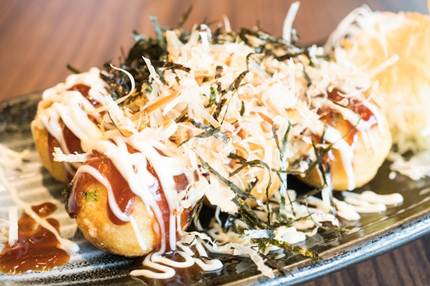
Takoyaki: savoryoctopus-filled dough balls topped with a slightly sweet sauce, Japanese mayonnaise, bonito flakes (dried, shaved fish flakes), and dried seaweed.

Okonomiyaki: savory pancakes filled with vegetables (cabbage), pork, or seafood. Depending on the restaurant, it is possible to choose special fillings such as wasabi, cheese, and kimchi (spicy fermented cabbage). Okonomiyaki is usually prepared at specialty restaurants where the customer makes the pancake on an iron griddle, or it is prepared and served by the chef. Making a pancake right at the table is pretty exciting and fun, but if it seems too intimidating, the staff can lend a hand.
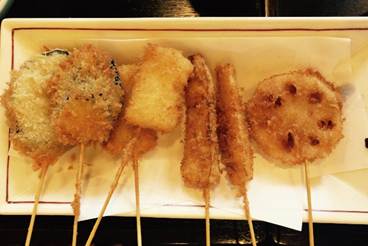
Kushikatsu: (Also known as kushiage) One of the most popular street foods in Osaka is kushikatsu – breaded, deep-fried, skewered meat, seafood, or vegetables. The range of foods that can be deep-fried seems to be innumerable; however, the most popular skewers are onions with pork. The skewers are served with a sweet dipping sauce – a mix of Worcestershire and soy sauce, creating a delicious mix of sweet and savory tastes. With kushikatsu, it is normal to have a bowl of cabbage to use to scoop up the sweet sauce and create a palate-cleansing balance between the fresh, crisp vegetables and fried skewers. Be sure to enjoy kushikatsu with a nice, cold beer.
Drinks: Japanese whiskey holds a growing reputation amongst the ranks of world-class whiskeys. When pairing whiskey with street food and snacks, one can hardly go wrong. The best combinations of foods with whisky are nuts, chocolate, BBQ, and grilled beef.
Umeshu is a sweet, refreshing plum wine that pairs well with cheese, seafood, and grilled or fried chicken. This drink is not only well-known in Osaka, but throughout Japan. There are various ways you can enjoy umeshu: with crushed ice, soda water, or with added lime and mint. Because of its light, fruity flavor, umeshu is a perfect pairing with street foods and snacks year-round, but especially in spring and summer.
Kyoto: Traditional Flavors with a Zen Twist
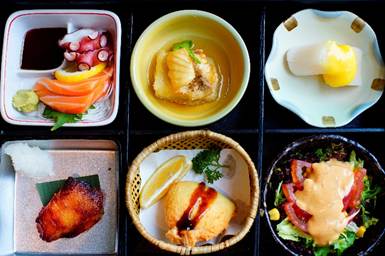
Kyoto is renowned for its refined, traditional dining experiences, with kaiseki ryori standing out as a prime example. This exquisite multi-course meal begins with a small glass of sake, followed by appetizers—often a vibrant plate of fresh, colorful vegetables. The main courses feature a variety of dishes, including a delicate soup, sashimi (sliced raw fish), boiled vegetables, grilled fish or meat, tempura, and pickled vegetables. To conclude the meal, guests are served rice, miso soup, and more pickled vegetables, followed by a light and refreshing dessert, typically seasonal fresh fruit.
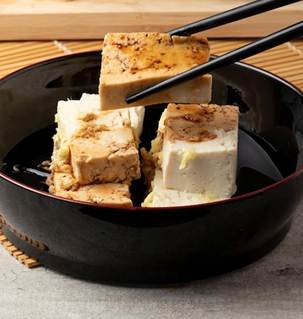
Yudofu: Tofu hot pot, usually enjoyed near temples, is a classic winter meal in Kyoto. Fresh tofu is boiled with green onions in a seaweed broth in a hot pot and eaten with soy sauce or ponzu (a tangy citrus sauce).
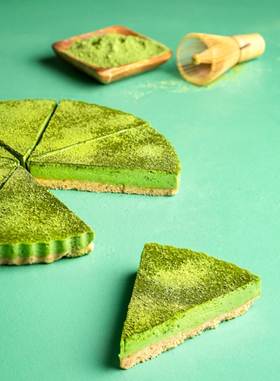
Matcha: With a plethora of tea houses, it is easy to find the most notable matcha (green tea) sweets. Matcha-flavored mochi, cookies, chocolate, cakes, and ice cream are sweets that cannot be missed by green tea lovers. Kyoto’s most prominent tea houses have been established for hundreds of years and produce sweets that customers regularly line up to indulge in.
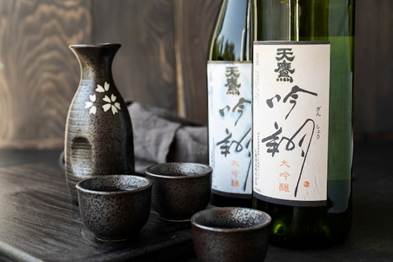
Drinks: Kyoto’s Fushimi District is one of the most outstanding areas in Japan, known for producing high-grade sake for hundreds of years. With a combination of the pure water from the area and high-quality rice, Fushimi District produces a variety of sake ranging from fresh and fruity to cloudy and sparkling.
From Tokyo’s trendy eats to Osaka’s hearty comfort food and Kyoto’s elegant flavors, Japan’s food scene is a total treat. Each city has its own vibe, mixing tradition with tasty twists that’ll keep you coming back for more. So, grab your chopsticks and join Best Experience Japan for a delicious adventure you won’t forget!
